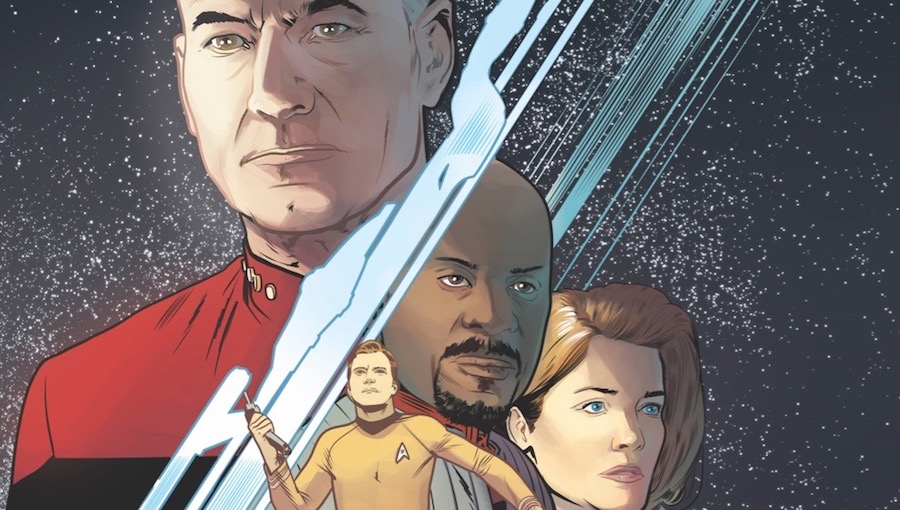A little over a year ago (Wow, has it really been that long?), I reviewed the first issue in a new Star Trek comic called Star Trek: Waypoint. Released for Trek’s 50th anniversary, it was a collection of new, standalone short stories and adventures from each of the series: TOS, TNG, DS9, Voyager, and Enterprise. (No Discovery, sorry.) I loved that first issue and had nothing but great things to say about it. So, when the full collection of Waypoint comics came up for review, naturally, I jumped on it.
Then, I began to second-guess myself. My love of this comic was primarily based on one story, “Puzzles,” from the first issue. It featured: TNG (my favorite Trek series), Data (my favorite Trek character), and time travel (my favorite plot device, and one of my favorite things, just in general). With all of those things that “Puzzles” had going for it, it suddenly seemed unlikely that the rest of the series could possibly measure up. Perhaps I was headed for disappointment.
Well, I’m happy to report that Star Trek: Waypoint is not only not a disappointment, it’s absolutely fantastic. In fact, as amazing as “Puzzles” was, with its time travel and Data-centricity, it wasn’t even the best of the lot. That distinction is actually a tie between Original Series story “Legacy” and Voyager story “The Wildman Maneuver.”
“Legacy,” by Sam Maggs, tells us about the career of a female Redshirt and her tireless efforts to save the Enterprise from disaster, while Kirk, Spock, et al. get all the glory and all the credit. “The Wildman Maneuver,” by Mairghread Scott, is… honestly, I don’t want to spoil the surprise for you, but it’s brilliant and hilarious and is, among other things, a loving sendup of the concept of the Mary Sue.
There are plenty of other great stories here, as well. “Mother’s Walk” (from DS9) and “The Fragile Beauty of Loyalty” (from Enterprise) are both poignant and touching in unexpected ways. And “The Fear” (from the unproduced Star Trek: Phase II series) takes an interesting look at friends vs. enemies, danger vs. safety, and similar concepts.
Though, of course, some stories are better than others, truth be told, there’s not a weak link in the bunch. Each of them has a different writer and a different artist, providing us with a variety of unique narrative and visual styles. The comic medium also allows us to explore certain characters, scenarios, and landscapes that would be cost-prohibitive on a TV show, thus opening up some great new possibilities, for our casts of familiar characters.
My only criticism is that there are significantly more stories from the Original Series than any other. I suppose that’s just a matter of personal preference. In fact, I understand why they would want to focus more on TOS, as the comic does commemorate the show’s 50th anniversary. Still, it would have been nice to see a few more stories from TNG and the others that people of my generation grew up watching. TNG and DS9 only get two stories apiece in this anthology, and Voyager and Enterprise each only get 1—compared with 6 total stories featuring the TOS crew.
Still, it’s a minor criticism at best. No matter the series, these stories are all a lot of fun. They’re obviously constructed with love and respect for the source material, and they succeed in capturing the spirit of each series and its characters—but can also be enjoyed even if you barely know anything about that particular series or its characters at all. If you’re a fan of any of the Star Trek series, you must read Star Trek: Waypoint. As a lifelong Trek fan, I absolutely loved it, and I think you will, too.

